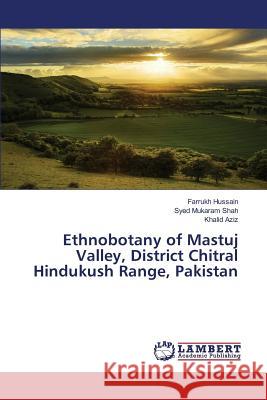Ethnobotany of Mastuj Valley, District Chitral Hindukush Range, Pakistan » książka
Ethnobotany of Mastuj Valley, District Chitral Hindukush Range, Pakistan
ISBN-13: 9783659824647 / Angielski / Miękka / 2016 / 128 str.
Mastuj Valley, District Chitral is a remote isolated part of Hindukush range in Pakistan, where the people still retain their traditional knowledge, culture, rituals and dignity. The valley has dry temperate to alpine climate. The elder people are well knowledgeable about the traditional uses of plants. The young generation is slowly moving away from the traditional way of life. Plant and human interaction has generated ethnobotanical knowledge. This book provides first hand information on local uses of 398 plants and local medicinal recipes of 163 species. One species is remedy for many disease or many species cure one disease. This knowledge is orally transferred through generations. This trusted centuries old knowledge is fading out rapidly. Ethnobotany is the Science of Survival, and this science must survive for human survival. We firmly believe that this book will be of great interest to botanists, ethnobotanists, foresters, local healers, hakims, herbalists, and other scientific community. Since all modern drugs are derived from the natural source, therefore medicine industries would also find the information as new avenue for the formulation of future drugs and medicines.
Mastuj Valley, District Chitral is a remote isolated part of Hindukush range in Pakistan, where the people still retain their traditional knowledge, culture, rituals and dignity. The valley has dry temperate to alpine climate. The elder people are well knowledgeable about the traditional uses of plants. The young generation is slowly moving away from the traditional way of life. Plant and human interaction has generated ethnobotanical knowledge. This book provides first hand information on local uses of 398 plants and local medicinal recipes of 163 species. One species is remedy for many disease or many species cure one disease. This knowledge is orally transferred through generations. This trusted centuries old knowledge is fading out rapidly. Ethnobotany is the Science of Survival, and this science must survive for human survival. We firmly believe that this book will be of great interest to botanists, ethnobotanists, foresters, local healers, hakims, herbalists, and other scientific community. Since all modern drugs are derived from the natural source, therefore medicine industries would also find the information as new avenue for the formulation of future drugs and medicines.











